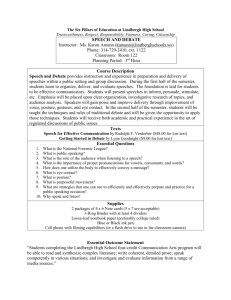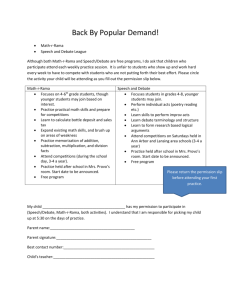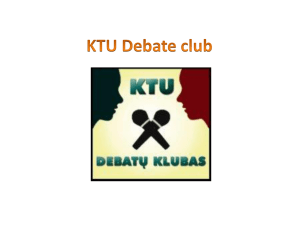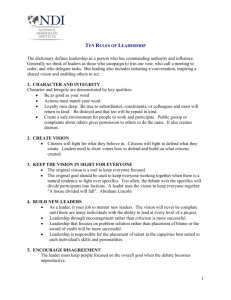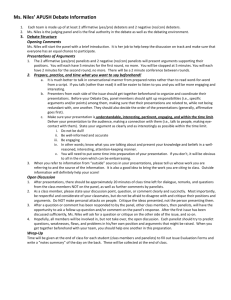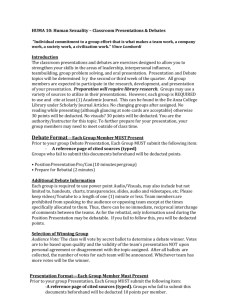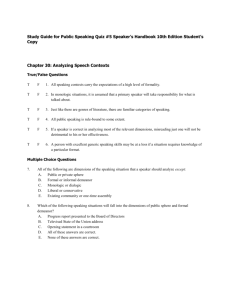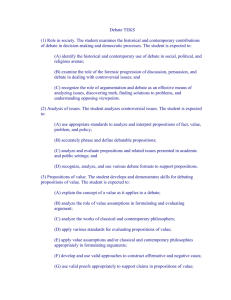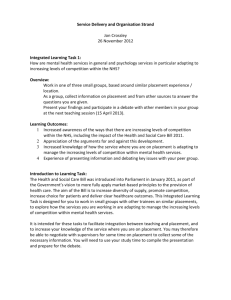Overview of lecture-lab
advertisement
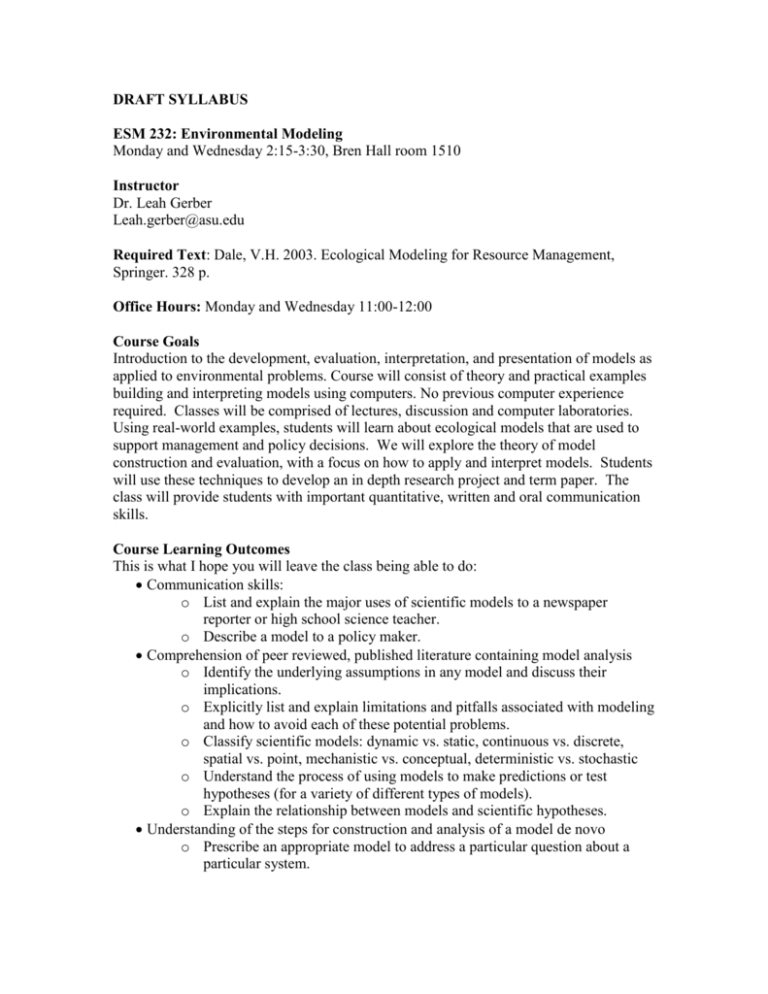
DRAFT SYLLABUS ESM 232: Environmental Modeling Monday and Wednesday 2:15-3:30, Bren Hall room 1510 Instructor Dr. Leah Gerber Leah.gerber@asu.edu Required Text: Dale, V.H. 2003. Ecological Modeling for Resource Management, Springer. 328 p. Office Hours: Monday and Wednesday 11:00-12:00 Course Goals Introduction to the development, evaluation, interpretation, and presentation of models as applied to environmental problems. Course will consist of theory and practical examples building and interpreting models using computers. No previous computer experience required. Classes will be comprised of lectures, discussion and computer laboratories. Using real-world examples, students will learn about ecological models that are used to support management and policy decisions. We will explore the theory of model construction and evaluation, with a focus on how to apply and interpret models. Students will use these techniques to develop an in depth research project and term paper. The class will provide students with important quantitative, written and oral communication skills. Course Learning Outcomes This is what I hope you will leave the class being able to do: Communication skills: o List and explain the major uses of scientific models to a newspaper reporter or high school science teacher. o Describe a model to a policy maker. Comprehension of peer reviewed, published literature containing model analysis o Identify the underlying assumptions in any model and discuss their implications. o Explicitly list and explain limitations and pitfalls associated with modeling and how to avoid each of these potential problems. o Classify scientific models: dynamic vs. static, continuous vs. discrete, spatial vs. point, mechanistic vs. conceptual, deterministic vs. stochastic o Understand the process of using models to make predictions or test hypotheses (for a variety of different types of models). o Explain the relationship between models and scientific hypotheses. Understanding of the steps for construction and analysis of a model de novo o Prescribe an appropriate model to address a particular question about a particular system. o Outline the concepts and steps involved in constructing and applying models. o Have basic familiarity with software and programming. Overview of lecture-lab-debate schedule The course will begin with two background lectures. First, we will discuss the value of models in managing environmental resources. Second I will provide an overview of the types of environmental models as well as my own philosophy about how to build them. Activities for the next seven weeks will cover seven broad topics (one per week) and be structured around three general themes: 1) How to construct models, 2) How to evaluate models and 3) How to cope with models in decision-making. Each week I will start off with a lecture that poses a critical environmental problem and a modeling approach that provides guidance on how to solve this problem. Lectures (Tuesdays) will typically cover the first two themes whereas labs or debates (Thursdays) will cover the third theme. The goal of labs is to introduce you to a few tools of the trade for implementing models. Debates will focus on analysis of published models related to each topic. Proficiency in any of these tools is not required; in fact proficiency is beyond the scope of the class. Instead I want you to learn enough about modeling, software and implementation so that you can critically evaluate others work in which the same tools are applied. You will have the opportunity to describe your analysis of a policy-relevant model in your final presentation, which will take place during the last two weeks of class. Grading 35%: Policy brief 35%: Computer labs 15% Final presentation 15%: Participation and attendance Directed Research Project You may work independently or as a team with up to 3 classmates to prepare a policy brief that includes an analysis of an environmental model. I encourage you to use this as an opportunity to strengthen the modeling associated with your Group Project for Bren. I will work with you independently or in groups and you will have a chance to get feedback from me when you submit your proposal (due October 27). For group projects, your proposal should make clear who will be doing what for the final paper. Your final presentation you are expected to clearly communicate your understanding of the model construction as well as your evaluation of the model. Date Lecture Topic Lab/Debate (application) 27-Sep Lecture 1: Why do we need models to address environmental problems? Breaking the ice: Discussion about how models can inform decision-making. Reading Ch. 1, 2, 4 29-Sep Lecture 2: How to construct a The Wizard of Oz: Discussion model. Overview of different about transparency in model types of models construction and believability in policy arena 4-Oct Lecture 3: Decision analysis and applying models to make Lab: Multicriteria decision decisions analysis and optimization 6-Oct Lab 1 11-Oct Lecture 4: Extinction risk: Matrix population models and sensitivity analysis Lab: Sensitivity analysis 13-Oct 18-Oct 20-Oct Ch. 8 Ch. 5-6 Lab 2 Lecture 5: Climate change mitigation: Climate and hydrologic models (guest) Debate: The role of models in Ch. 2 determining climate change Ch 9-10 policy Debate 1 25-Oct Lecture 6: Land use planning: Lab: Establishing marine Populations in Space reserves in the Gulf of California under climate Lab 3 change (Marxan software) TBD 27-Oct 1-Nov 3-Nov 8-Nov Lecture 7: Managing ecosystems: Ecosystem & harvest models Lab: Whales eat fish (Ecopath Ch. 13, 14 software) Lab 4 Lecture 8: Life cycle analysis (guest) 10-Nov Debate 2 15-Nov Lecture 9: Ecosystem services: Socio-economic systems 17-Nov Debate 3 22-Nov Presentations Debate: Merits of LEED certification or Carbon Footprint estimation Ch. 16 Debate: Merits and perils of valuing ecosystem services TBD Presentations 24-Nov 29-Nov 1-Dec Presentations Presentations


